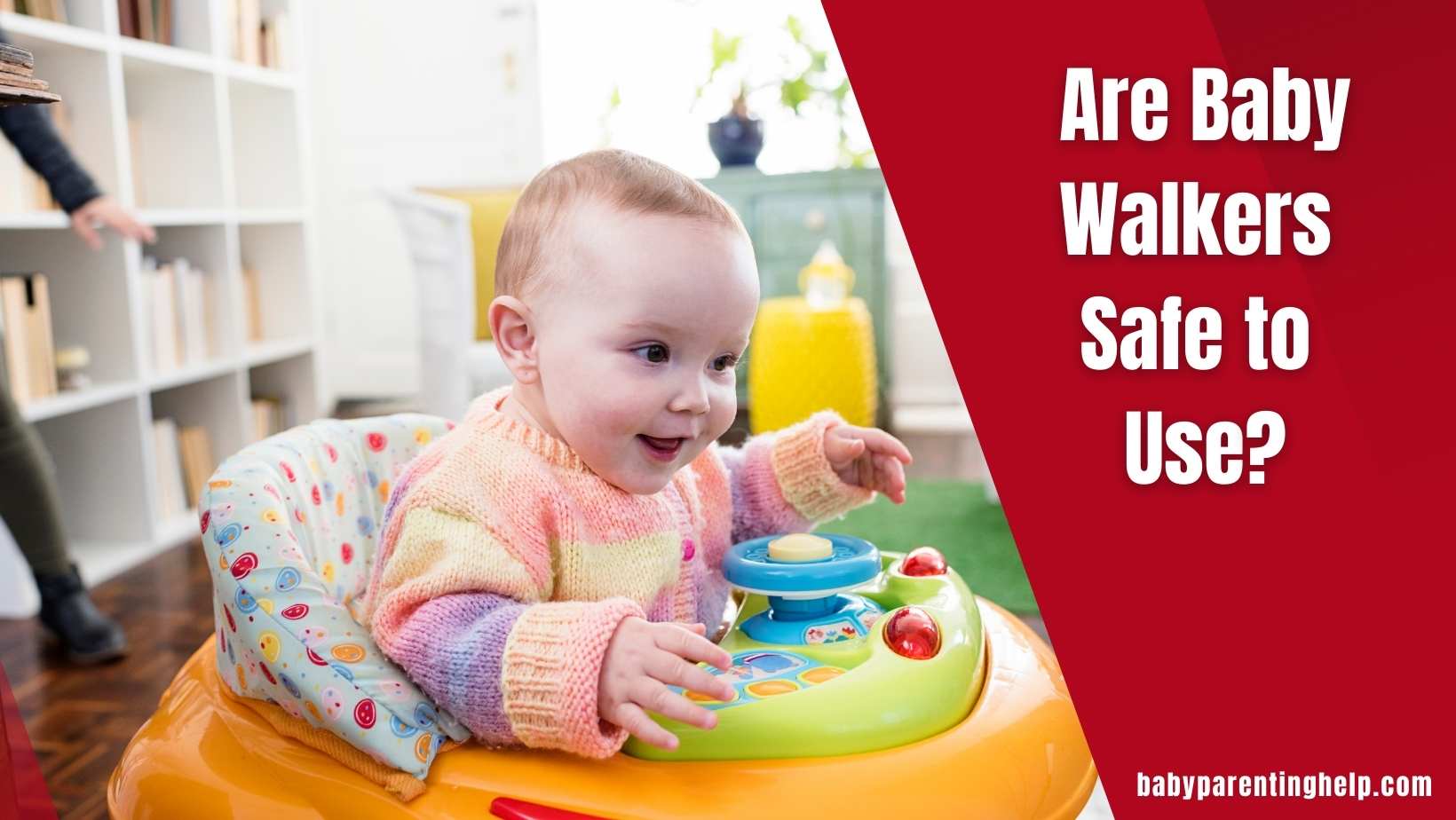Baby walkers have long been a popular choice for parents looking to entertain and engage their little ones while providing a means for them to move around before they can walk independently. However, safety concerns have arisen over the years, leading many to question whether baby walkers are safe. In this article, we will explore the advantages and disadvantages of baby walkers, shed light on potential risks, and offer alternative options for promoting safe and healthy development in infants.
Contents
Introduction
As parents, we strive to create an environment that fosters the healthy development of our children. Baby walkers have been a common choice for many, as they provide a fun way for infants to explore their surroundings while strengthening their leg muscles. However, it is essential to consider the potential risks associated with these devices to ensure the safety and well-being of our little ones.
Understanding Baby Walkers
Baby walkers are wheeled devices designed to support an infant in an upright position, enabling them to move around using their legs. They typically consist of a seat surrounded by a frame with wheels attached. Infants are placed in the middle, and the walker moves forward as they push off against the ground with their feet.
Advantages of Baby Walkers
Baby walkers offer several perceived advantages, contributing to their popularity among parents. Here are some potential benefits:
1. Entertainment and Engagement
Baby walkers provide entertainment for infants by offering them a new way to explore their surroundings. The wheels allow them to move around more freely and independently, which can be exciting.
2. Development of Motor Skills
Using a baby walker can help infants develop their leg muscles and coordination. Pushing off with their feet strengthens their lower body and aids in the progression towards independent walking.
3. Multisensory Stimulation
Many baby walkers have interactive features such as toys, lights, and sounds, providing multisensory stimulation. This can enhance cognitive development and sensory perception in infants.
Potential Risks Associated with Baby Walkers
While baby walkers may have their advantages, it is crucial to be aware of the potential risks involved:
1. Accidental Falls and Injuries
Baby walkers can increase the risk of falls down stairs, as their mobility allows them to reach typically inaccessible areas. Unsupervised use of walkers can lead to severe injuries, such as head trauma or fractures.
2. Delay in Independent Walking
Contrary to popular belief, studies have shown that prolonged use of baby walkers can delay independent walking. Infants become dependent on the support provided by the walker, which may hinder the natural progression of their walking skills.
3. Developmental Delays
Extended use of baby walkers may result in developmental delays in areas such as motor skills, balance, and posture. Infants miss essential opportunities to practice weight-bearing and learn to balance their bodies without external support.
4. Burns and Scalds
Baby walkers with wheels can move quickly and unpredictably, increasing the likelihood of collisions with hazardous objects or hot surfaces. Infants may pull down things or reach dangerous areas, leading to burns or scalds.
Recommended Alternatives to Baby Walkers
To ensure the safety and healthy development of your child, consider the following alternatives to baby walkers:
1. Sit-and-Stand Activity Centers
Sit-and-stand activity centres provide a stationary platform for infants to play and explore. They offer a variety of toys and interactive elements that promote sensory development and encourage leg strength without the risks associated with mobility.
2. Push Toys
Push toys like sturdy wagons or walkers with a stable base allow infants to practice walking while providing support. These toys engage their leg muscles and help them gain confidence in their ability to move independently.
3. Baby Bouncers and Jumpers
Baby bouncers and jumpers allow infants to bounce and move within a safe and controlled environment. These devices provide entertainment and contribute to developing leg muscles, coordination, and balance.
Conclusion
When it comes to the safety and development of our children, it is crucial to make informed decisions. While baby walkers may offer some benefits, they also pose significant risks. Accidental falls, delays in independent walking, and potential developmental delays are all factors to consider. Instead of relying solely on baby walkers, explore alternative options that promote safe and healthy development. Remember, the well-being of our little ones should always be our top priority.
F.A.Q.s
- Are baby walkers suitable for all infants?Baby walkers are not recommended for all infants, especially those who cannot sit up unassisted or have not yet developed the strength and coordination required to use them safely. It is best to consult with a paediatrician before introducing a baby walker.
- At what age can babies start using baby walkers?Most baby walkers are designed for infants aged 6 to 12 months who can sit up unassisted. However, it is essential to note that every child develops at their own pace, so it is necessary to consider their readiness before introducing a walker.
- Can baby walkers help infants learn to walk faster?Contrary to popular belief, baby walkers do not necessarily help infants learn to walk faster. Studies suggest that prolonged use of walkers can delay independent walking. It is crucial to provide infants with ample opportunities for natural development and avoid overreliance on external support.
- What should I consider when choosing an alternative to a baby walker?When selecting an alternative to a baby walker, consider the developmental benefits it offers, its safety features, and the age appropriateness for your child. Ensure the choice encourages independent movement and engages their senses without compromising safety.
- Where can I find more information on baby walker safety?For more information on baby walker safety, consult reputable sources such as paediatricians, child safety organizations, or government health departments. They can provide up-to-date guidelines and recommendations based on current research and expertise.

I am an accomplished writer, a devoted father, and a compassionate advocate for new and experienced parents in my baby’s parenting journey. With a wealth of firsthand experience and a deep understanding of the joys and challenges of raising children, I become a trusted voice in the parenting community.


